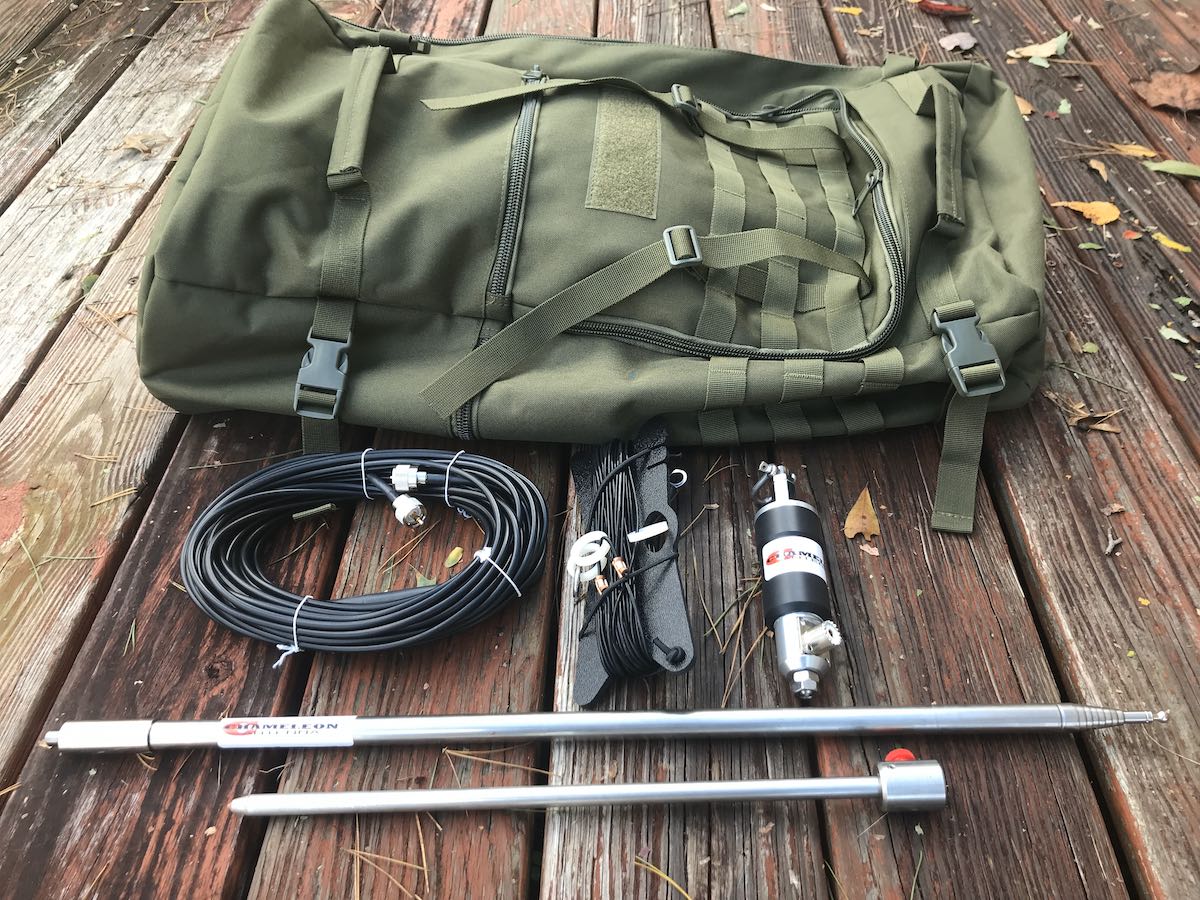 Chameleon Antenna recently sent me a prototype of their latest antenna: the CHA MPAS Lite.
Chameleon Antenna recently sent me a prototype of their latest antenna: the CHA MPAS Lite.
The MPAS Lite is a compact version of their MPAS 2.0 modular antenna system and designed to be even more portable.
Chameleon Antenna is a specialist antenna manufacturer that makes military-grade, field portable antennas that are low-profile and stealthy. Chameleon products are 100% made in the USA and their customers range from amateur radio operators to the armed forces.
Their antennas are not cheap, but they are a prime example when we talk about “you pay for what you get.” In all of my years of evaluating radio products, I’ve never seen better quality field antennas–they’re absolutely top-shelf.
Zeta
I’m currently in my hometown doing a little caregiving for my parents. I’d only planned to be here for a couple of days, but when I saw that the remnants of Hurricane Zeta would pass directly over us with tropical storm force winds and rain, I stuck around to help the folks out.
Zeta struck quite a blow, in fact. No injuries reported, but over 23,000 of us have been without power for over 34+ hours in Catawba county. With saturated grounds, the winds toppled a lot of trees and damaged power lines.
Yesterday, I wanted to take advantage of the power outage and get on the air. I couldn’t really do a POTA activation because I needed to manage things here at my parents’ house. Plus, why not profit from the grid being down and bathe in a noise-free RF space–?
I decided to set it up in their front yard.
CHA MPAS Lite
I had never deployed the MPAS Lite before, so I did a quick scan through the owner’s manual. Although the MPAS Lite (like the MPAS 2.0) can be configured a number of ways, I deployed it as a simple vertical antenna.
Assembly was simple:
- Insert the stainless steel spike in the ground,
- Attach the counterpoise wire (I unraveled about 25′) to the spike
- Screw on the CHA Micro-Hybrid
- Screw the 17′ telescoping whip onto the Hybrid-Micro
- Extend the whip antenna fully
- Connect the supplied coax (with in-line choke) to the Hybrid-Micro
- Connect the antenna to the rig
Although I had the Icom IC-705 packed, I wanted to keep things simple by using the Elecraft KX2 I’d also packed since it has a built-in ATU.
Important: the CHA MPAS Lite requires an ATU to get a good match across the bands.
I wasn’t in the mood to ragchew yesterday, but I thought it might be fun to see how easily I could tune the MPAS Lite from 80 meters up.
I checked the Parks On The Air spots page and saw NK8O activating a park in Minnesota in CW:
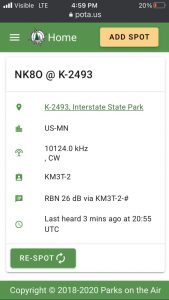 He was working a bit of a pile-up, but after three calls, he worked me and reported a 559 signal report. Not bad at 5 watts!
He was working a bit of a pile-up, but after three calls, he worked me and reported a 559 signal report. Not bad at 5 watts!
I then moved to 40, 18, and 20 meter and called CQ a couple times to see if the Reverse Beacon Network (RBN) could spot me. I like using the RBN to give me a “quick and dirty” signal report. I was very pleased with the bands I tested:
Those dB numbers are quite good for an op running 5 watts into a vertical compromised antenna.
The KX2 very effortlessly got near 1:1 matches on every band I tested.
 Of course, after working a few stations in CW and SSB, I tuned to the broadcast bands and enjoyed a little RFI-free SWLing. Noting 13dka’s recent article, I’m thinking on the coast, the MPAS Lite will make for a superb amateur radio and SWLing antenna.
Of course, after working a few stations in CW and SSB, I tuned to the broadcast bands and enjoyed a little RFI-free SWLing. Noting 13dka’s recent article, I’m thinking on the coast, the MPAS Lite will make for a superb amateur radio and SWLing antenna.
Durability
Although the remnants of Zeta had effectively passed through the area three hours prior, it was still very blustery outside. I was concerned gusts might even be a little too strong for the 17′ whip, but I was wrong. The whip handled the wind gusts with ease and the spike held it in place with no problem.
One of the things I have to watch with my Wolf River Coils TIA vertical is the fact it’s prone to fall in windy conditions and many ops have noted that this can permanently damage the telescoping whip (the weak point in that system).
I’m pretty certain this wouldn’t happen with the Chameleon 17′ whip–it feels very substantial and solid.
Ready to hit the field with the CHA MPAS Lite!
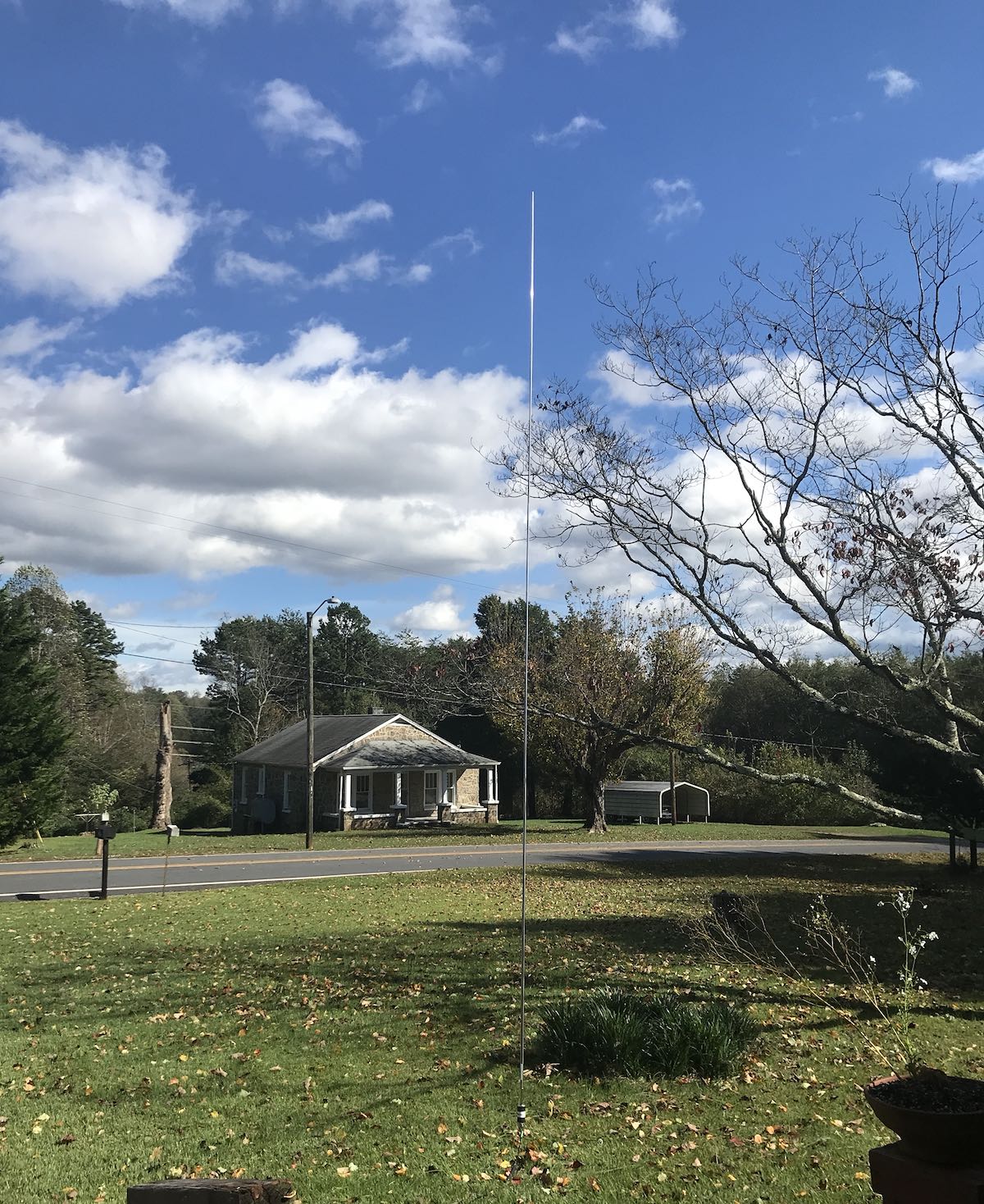 I’m a huge fan of wire antennas because I believe they give me the most “bang-for-buck” in the field, but they’re not always practical to deploy. I like having a good self-supporting antenna option in my tool belt when there are no trees around or when parks don’t allow me to hang antennas in their trees.
I’m a huge fan of wire antennas because I believe they give me the most “bang-for-buck” in the field, but they’re not always practical to deploy. I like having a good self-supporting antenna option in my tool belt when there are no trees around or when parks don’t allow me to hang antennas in their trees.
I’ve got a park in mind that will make for a good test of the CHA MPAS Lite: it’s a remote game land with no real parking option. I’ll have to activate it on the roadside–an ideal application for the MPAS Lite.

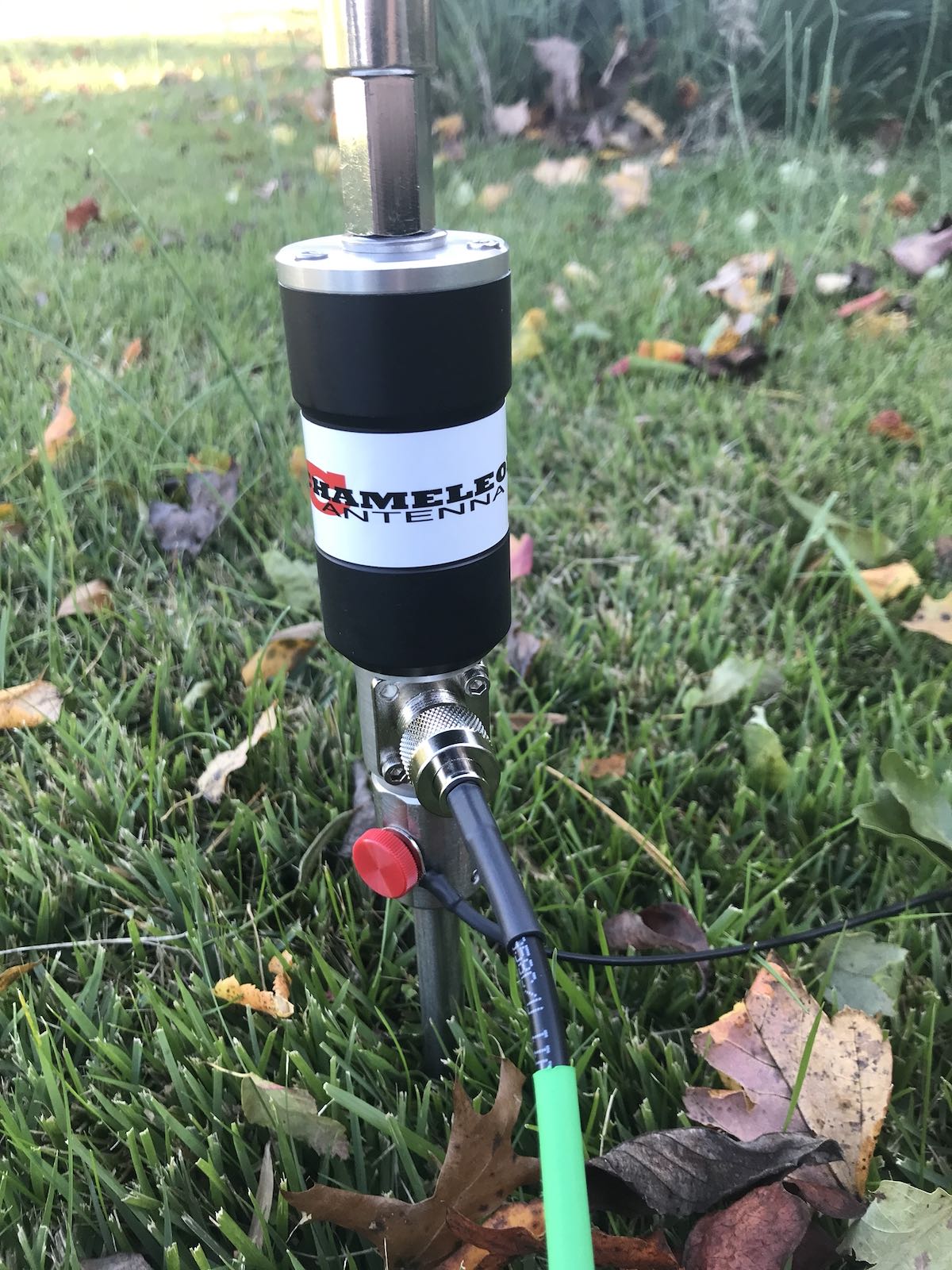
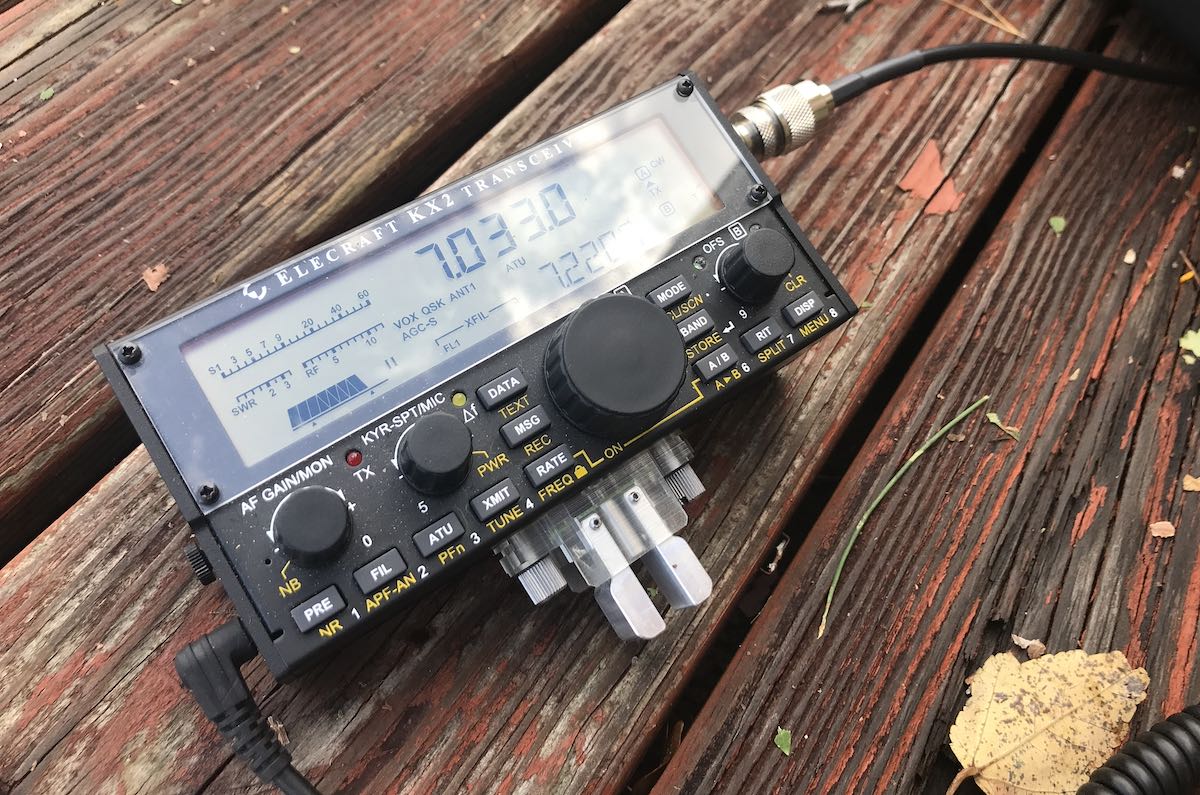
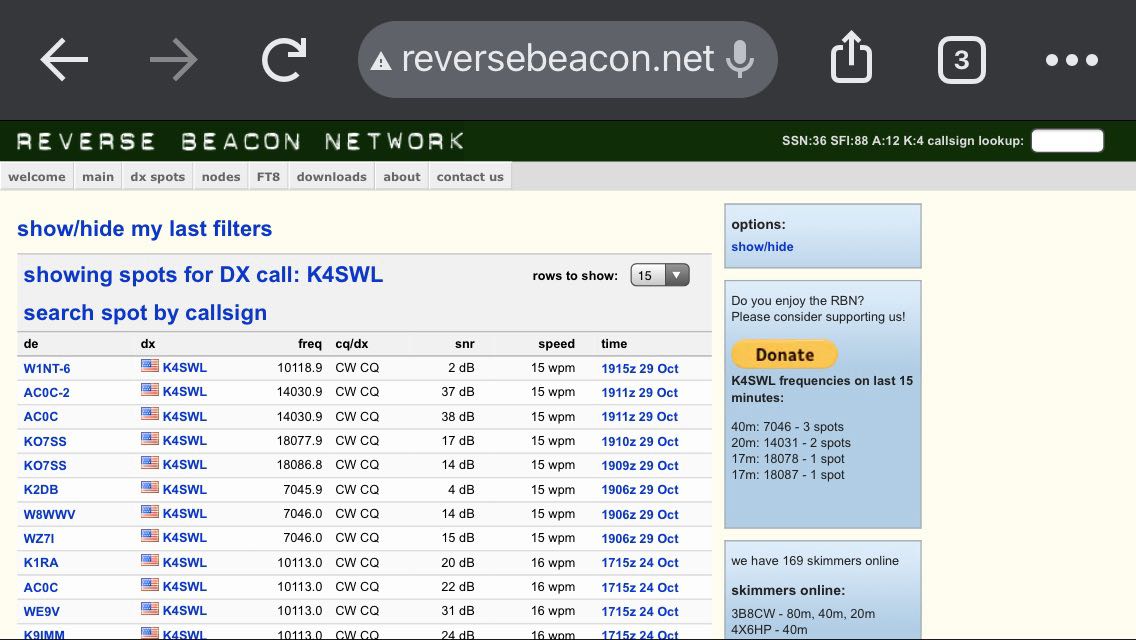
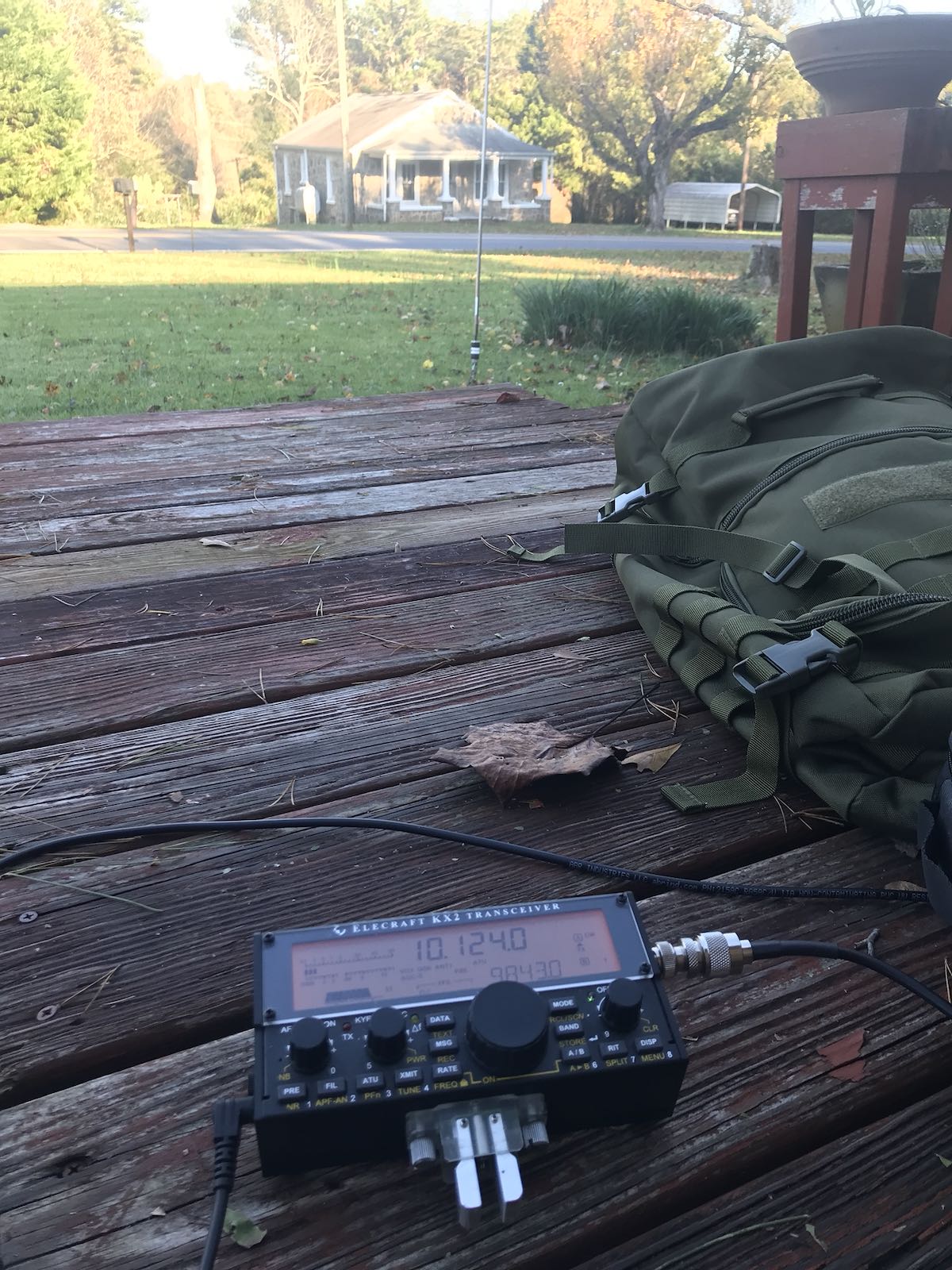
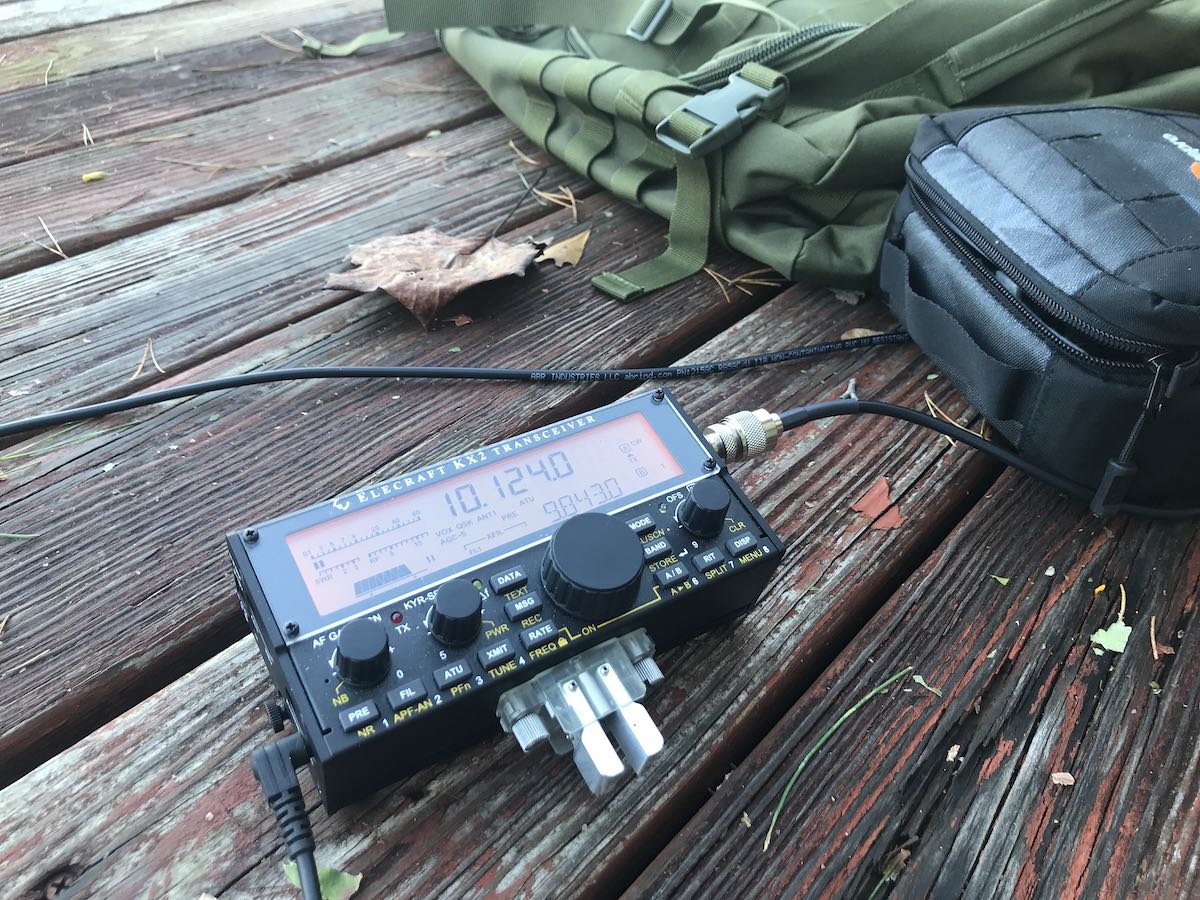
Thank you for a great post! I too have just received an MPAS lite antenna, and on order is my KX2 with ATU. I can’t wait to receive it. So I have a IC705 and it is brilliant, but larger and no ATU, boy I wish it had one. So I am now on the hunt for an ATU and am undecided between the Ah705 and Elecraft T1. I will figure this out eventually…Again great information and really liked all the comments.
Great post! I just got mine yesterday and plan to use it for SOTA primarily. The only concern I have is the weight of the 50ft coax. I have a 15ft SotaBeams coax, but it doesn’t have an inline choke. Have you tried operating the MPAS Lite with shorter cables without a choke? On a related note, have you tried adding more radials to see if it makes a difference?
I used the MPAS Lite yesterday with an 8′ coax and no in-line choke. With a KX2 running 5-10W? No problem!
I’ve never added extra radials, but I can’t see how that would hurt.
You’re going to love the MPAS Lite. It’s one of the most useful, versatile antennas I’ve used.
Awesome! I’ll give that 15′ coax a try on my next outing. Thanks!
Is the choke seen in the photos?
“Connect the supplied coax (with in-line choke) to the Hybrid-Micro”
Looks like a nice setup.
No, I don’t think it’s shown in any of my photos. The RFI choke in on the 50′ coax cable supplied with the MPAS Lite. A nice touch!
One thing I need to sort is an easier way of managing the 50′ line. It’s a brilliant length when you need some separation from the antenna, but most of my field activations only require perhaps 15′. I think I’ll keep wire ties on the bulk of the coil and a velcro strap around the remainder.
Cheers,
Thomas
I also have the MPAS 2.0 but have used only the vertical with the extension. It’s been up in some pretty blustery wind and been fine. It has performed well. I live jn Oregon and regularly hear Japanese HAMs. I also hear our neighbors to the north as well as Spanish speaking ops. This is a good antenna set. I use it with a new Yaesu FT 450D putting out 100 watts. It works 80 meters well, too.
It is expensive, but , like the author said, you get what you pay for. There are many excellent smaller, packable antennas out there, including the Buddipole and the Super Antenna.
I have the MPAS 2.0 and the WRC. The WRC has the advantage of being a resonant antenna, but requires a substantial ground field to be efficient.
Here in northern Nevada, the spike is generally impractical. However, the tripod from the WRC works quite well as a support, provided one either weights the legs (lots of rocks here for that) or stakes down the hub. In addition, I can use the ground field I built for the WRC as the counterpoise system for the MPAS 2.0.
If I’m only going to operate on one band, I think the WRC is the better choice. However, if I’m chasing SOTA/POTA operators, the multi-band capability of the MPAS 2.0 wins. Each has a place in my field kit.
Thanks for the review and I hope you and your folks are doing alright.
Thank you, David!
When I’ve deployed the WRC and it’s even a little breezy, I’ve also weighed down the legs and that does work quite well. I do imagine in your region driving a spike int he ground could be very problematic!
I’ve been overall pleased with the WRC TIA–it’s a nice little antenna for sure. I’m planning on adding three more radials–as you point out, I can tell it needs a better ground than the field than the three supplied radials provide. I’m trying to sort out how to manage those six ground radials and keep the winding compact in my backpack.
You’re right about the multi-band capability of the MPAS 2.0/Lite. I must admit that if I’m doing a POTA activation, since I’m typically not on the air longer than 60-90 minutes, I will gravitate to the MPAS 2.0/Lite. Hard to beat the quick band-changes.
And, by the way, the folks are still without power so I’m using much of my field batteries to charge and power items in their house. Looks like we could be without power for as much as 5 days.
Cheers,
Thomas
Looks easier to carry than the MPAS 2.0. I really like my MPAS 2.0 and it works so well I decided to leave it up all the time on the front lawn and take it down only for portable use. I regularly got from Ireland to South America 100w SSB on 20 M in the Summer, using only the single supplied radial oh and the cap hat which allows me work some bands with no tuner at all.
Really impressive Antenna, as expected performance does suffer on 80m but I’ve had QSOs to the U.K on 80m SSB from Ireland.
Hi, Mark,
I’ve had the MPAS Lite and MPAS 2.0 side-by-side and yes, the Lite version is easier to carry with less components. I was very pleasantly surprised with the height of the whip after fully deployed.
Cheers,
Thomas